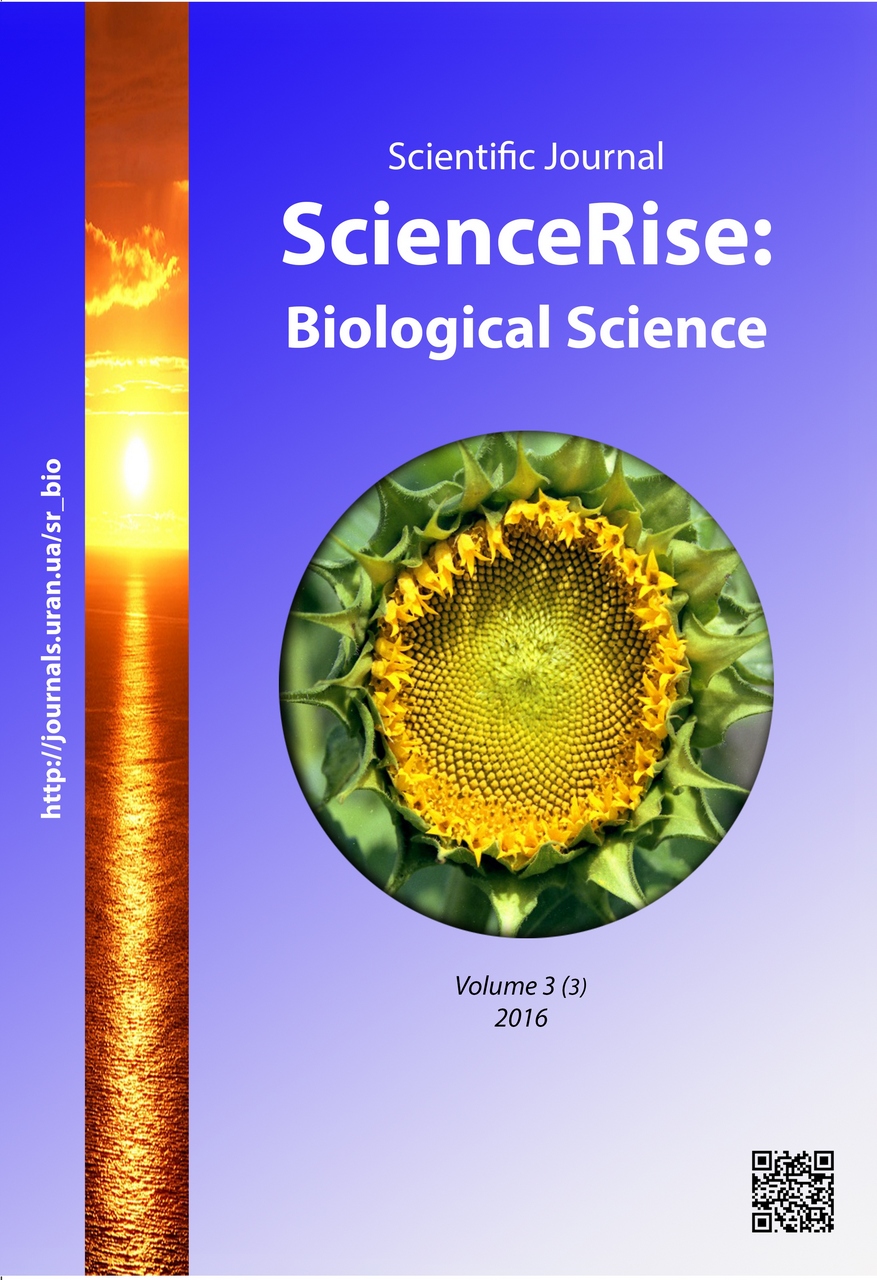Vitality structure of Corydalis Marschalliana (Pall. Ex Willd.) Pers. coenopopulations in sumy geobotanic district
DOI:
https://doi.org/10.15587/2519-8025.2016.83133Keywords:
Corydalis marschalliana, coenopopulation, vitality structure, quality index, Sumy geobotanical districtAbstract
Description of Corydalis marschalliana - one of spring ephemeroids synusia dominant of deciduous forests is given. Morphometric parameters for Corydalis marschalliana plants are estimated. Correlation pleiades are built for them and factor solution is received. The share of plants with different vitality classes is established and vitality structure of five coenopopulations of Corydalis marschalliana in Sumy geobotanical district is determined for their ratio
References
- Zlobin, Ju. A. (2009). Populjacionnaja jekologija rastenij: sovremennoe sostojanie, tochki rosta. Sumy: Universitet. kniga, 263.
- Zlobin, Ju. A., Skljar, V. G., Klimenko, A. A. (2013). Populjacii redkih vidov rastenij: teoreticheskie osnovy i metodika izuchenija. Sumy: Universitetskaja kniga, 439.
- Zhyljajev, G., Caryk, J. (2009). Koncepcija zhyttjezdatnosti populjacij. Zhyttjezdatnist' populjacij roslyn vysokogir'ja Ukrai'ns'kyh Karpat. Lviv: Merkator, 7–16.
- Skljar, V. G. (2013). Vitalitetna struktura pidrostu providnyh lisoutvorjujuchyh vydiv Novgorod-Siverskogo Polissja. Uchenye zapiski Tavricheskogo nacional'nogo universiteta im. V. I. Vernadskogo, 26 (1), 206–217.
- Gavrilova, M. N. (2008). Vitalitetnaja struktura cenopopuljacij nekotoryh kustarnikov v raznyh rajonah respubliki Marij Jel. Vestnik Kazanskogo gosudarstvennogo agrarnogo universiteta, 7 (1), 106–111.
- Kovalenko, I. M. (2006). Struktura populjacij dominantiv trav’jano-chagarnychkovogo jarusu v lisovyh fitocenozah Desnjans'ko-Staroguts'kogo nacional'nogo pryrodnogo parku. Vitalitetna struktura. Ukrai'ns'kyj botanichnyj zhurnal, 63 (3), 376–386.
- Krivec, S. A., Bisirova, Je. M., Demidko, D. A. (2008). Vitalitetnaja struktura drevostev kedra sibirskogo Pinus sibirica Du Tour na jugo-vostoke Zapadnoj Sibiri. Vestnik Tomskogo un-ta, 313, 225–231.
- Morozova, G. Ju. (2011). Vitalitetnaja struktura populjacij drevesnyh rastenij v urbanizirovannoj srede. Vol. 2. Otechestv. geobotanika: osnovnye vehi i perspektivy. Sankr-Peterburg, 159–161.
- Suetina, Ju. G., Jamberdova, E. I. (2010). Ontogenez i vozrastno-vitalitetnaja struktura populjacij lishajnika Evernia prunastri (L.) Ach. Vestnik Udmurtskogo u-ta. Biologija. Nauki o Zemle, 3, 44–53.
- Tyhonova, O. M. (2011). Vitalitetna struktura populjacij dejakyh vydiv bur’janiv u posivah zernovyh kul'tur. Visnyk Dnipropetrovs'kogo universytetu. Biologija. Ekologija, 1 (19), 123–129.
- Klymenko, G. O. (2011). Struktura populjacii' ridkisnogo vydu Pyrola chlorantha Sw. v umovah Novgorod-Sivers'kogo Polissja. Materialy HIII z’i'zdu Ukrai'ns'kogo botanichnogo tovarystva. Lviv, 131–132.
- Skljar, Ju. L. (2006). Populjacijna struktura Nymphaea candida J. et C. Presl basejnu Desny v mezhah Pivnichnogo Shodu Ukrai'ny. Ukr. botan. zhurn., 63 (4), 495–501.
- Sulejmanova, V. N. (2008). Vitalitet i vitalitetnaja struktura cenopopuljacij Majanthemum bifolium (L.) F. W. Schmidt. Chep. 1. Bioraznoobrazie: problemy i prespektivy sohranenija. Penza, 144–145.
- Thazaplizheva, L. H., Chadaeva, V. A. (2010). Vitalitetnaja struktura cenopopuljacij vidov roda Allium L. v uslovijah Kabardino-Balkarii. Vestnik Orenburgskogo gos. un-ta., 6 (112), 42–46.
- Andrijenko, T. L., Peregrym, M. M. (2012). Oficijni pereliky regional'no ridkisnyh roslyn administratyvnyh terytorij Ukrai'ny (dovidkove vydannja). Kyiv: Al'terpres, 148.
- Kleopov, Ju. D. (1990). Analiz flory shirokolistvennyh lesov evropejskoj chasti USSR. Kyiv: Nauk. dumka, 352.
- Zlobin, Ju. A. (2012). Komp'juternye programmy dlja analiza populjacij rastenij. Вisnyk Sums'kogo nacional'nogo agrarnogo universytetu. Serija «Agronomija i biologija», 2 (23), 3–6.
Downloads
Published
How to Cite
Issue
Section
License
Copyright (c) 2016 Олексій Володимирович Холодков, Вікторія Григорівна Скляр

This work is licensed under a Creative Commons Attribution 4.0 International License.
Our journal abides by the Creative Commons CC BY copyright rights and permissions for open access journals.
Authors, who are published in this journal, agree to the following conditions:
1. The authors reserve the right to authorship of the work and pass the first publication right of this work to the journal under the terms of a Creative Commons CC BY, which allows others to freely distribute the published research with the obligatory reference to the authors of the original work and the first publication of the work in this journal.
2. The authors have the right to conclude separate supplement agreements that relate to non-exclusive work distribution in the form in which it has been published by the journal (for example, to upload the work to the online storage of the journal or publish it as part of a monograph), provided that the reference to the first publication of the work in this journal is included.









